
The 13th arrondissement of Paris is one of the 20 arrondissements of Paris. In spoken French, the arrondissement is referred to as le treizième.
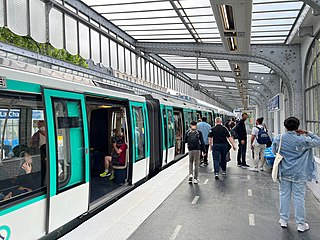
La Chapelle is a station on Paris Métro Line 2, on the border of the 10th and 18th arrondissements above the Boulevard de la Chapelle. The station is connected to the Gare du Nord and the Gare du Nord Métro station on lines 4 and 5.
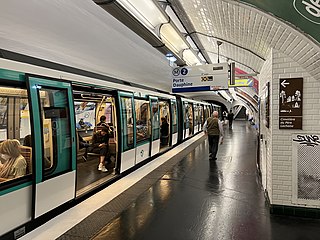
Philippe Auguste is a station on Line 2 of the Paris Métro, on the border of the 11th and 20th arrondissements.

Place d'Italie is a rapid transit station of the Paris Métro located in the heart of the 13th arrondissement of Paris, at the Place d'Italie. It is the southern terminus of Line 5 and is also served by Line 6 and Line 7.

Boissière is a station of the Paris Métro serving line 6 at the intersection of the Rue Boissière and the Avenue Kleber in the 16th arrondissement.

Saint-Jacques is a station on Line 6 of the Paris Métro. It serves Place Saint-Jacques in the 14th arrondissement. The Boulevard Saint-Jacques and Rue du Faubourg-Saint-Jacques also intersect the square. It is one of only a few Métro stations that have a combined entrance and ticket hall at street-level.

Glacière is an elevated station of the Paris Métro serving line 6 in the 13th arrondissement.

Corvisart is an elevated station of the Paris Métro serving line 6 at the intersection of the Rue du Corvisart and the Boulevard Auguste Blanqui in the 13th arrondissement.

Les Gobelins is a station on line 7 of the Paris Métro on the edges of the 5th and 13th arrondissements.

Wallace fountains are public drinking fountains named after, financed by and roughly designed by Sir Richard Wallace. The final design and sculpture is by Wallace's friend Charles-Auguste Lebourg. They are large cast-iron sculptures scattered throughout the city of Paris, France, mainly along the most-frequented sidewalks. A great aesthetic success, they are recognized worldwide as one of the symbols of Paris. A Wallace fountain can be seen outside the Wallace Collection in London, the gallery that houses the works of art collected by Sir Richard Wallace and the first four Marquesses of Hertford.

The Boulevard Saint-Michel is one of the two major streets in the Latin Quarter of Paris, France, the other being the Boulevard Saint-Germain. It is a tree-lined boulevard which runs south from the Pont Saint-Michel on the Seine and Place Saint-Michel, crosses the Boulevard Saint-Germain and continues alongside the Sorbonne and the Jardin du Luxembourg, ending at the Place Camille Jullian just before the Port-Royal RER station and the Avenue de l'Observatoire. It was created by Baron Haussmann to run parallel to the Rue Saint-Jacques which marks the historical north-south axis of Paris. It is known colloquially as Boul'Mich' in French.

Saint-Marcel is a station on Line 5 of the Paris Métro, located in the 13th arrondissement of Paris, under the Boulevard de l'Hôpital.

The Wall of the Ferme générale was one of the several city walls of Paris built between the early Middle Ages and the mid 19th century. Built between 1784 and 1791, the 24 km wall crossed the districts of the Place de l'Étoile, Batignolles, Pigalle, Belleville, Nation, the Place d'Italie, Denfert-Rochereau, Montparnasse and the Trocadéro, roughly following the route now traced by line 2 and line 6 of the Paris Métro. The wall was demolished in the early 1860s, although elements of some of its gates remain.

The Place d'Italie is a public space in the 13th arrondissement of Paris. The square has an average dimension somewhat less than 200 meters in extent, and the following streets meet there:

Sainte-Rosalie is a Roman Catholic church in the 13th arrondissement of Paris, built in 1869 in the honour of Rosalie Rendu, also known as Sister Rosalie.

The city walls of Paris refers to the city walls that surrounded Paris, as it grew from ancient times until the 20th century, built primarily to defend the city but also for administrative reasons. Several successive city walls were built over the centuries, either adding to existing walls or replacing demolished ones, through 1846, when construction of the Thiers wall was completed.
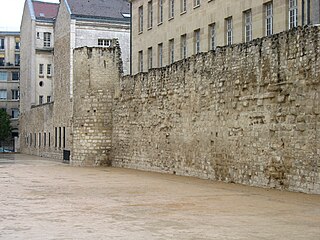
The Wall of Philip Augustus is the oldest city wall of Paris (France) whose plan is accurately known. Partially integrated into buildings, more traces of it remain than of the later fortifications.
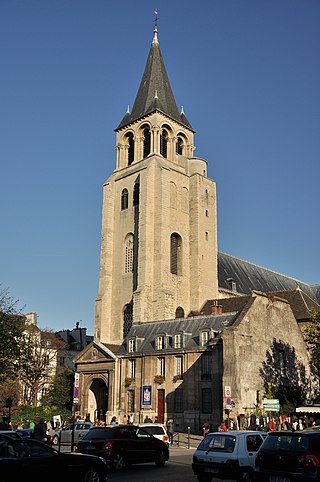
The city of Paris has notable examples of architecture of every period, from the Middle Ages to the 21st century. It was the birthplace of the Gothic style, and has important monuments of the French Renaissance, Classical revival, the Flamboyant style of the reign of Napoleon III, the Belle Époque, and the Art Nouveau style. The great Exposition Universelle (1889) and 1900 added Paris landmarks, including the Eiffel Tower and Grand Palais. In the 20th century, the Art Deco style of architecture first appeared in Paris, and Paris architects also influenced the postmodern architecture of the second half of the century.
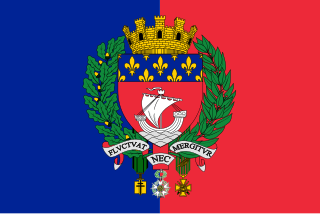
The following outline is provided as an overview of and topical guide to Paris:
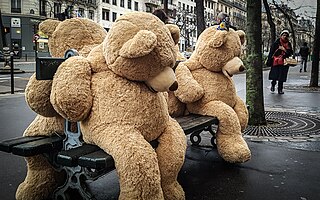
In October 2018, the owner of a book shop in the Gobelins neighbourhood in the 13th arrondissement of Paris began lending out oversized teddy bears. Photographs of them in human poses in various local and wider Parisian settings have been widely circulated.
This page is based on this
Wikipedia article Text is available under the
CC BY-SA 4.0 license; additional terms may apply.
Images, videos and audio are available under their respective licenses.


























